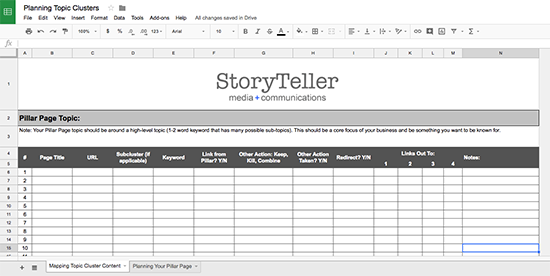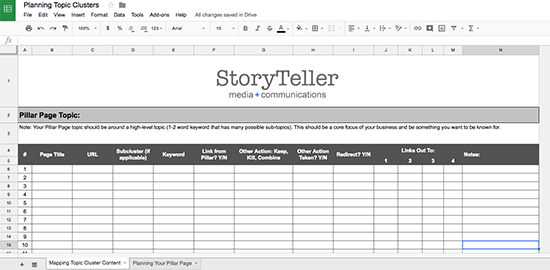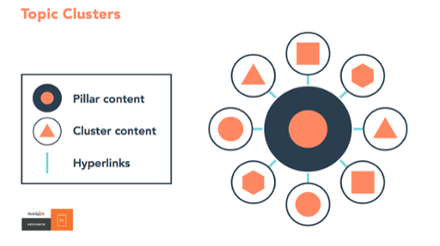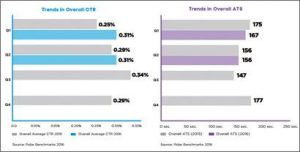— November 3, 2017
Once again, it’s time for marketers and SEO specialists to change our tactics. Over the last year or two, the conversation in inbound and digital marketing has shifted.
In the early days of blogging, the conventional wisdom was to create short, concise blog posts that add value and answer questions but don’t require a lot of time on the reader’s part.
More recently, website data has begun to show that longer blogs tend to rank higher in Google. So, of course, marketers and content companies jumped on the bandwagon that “longer content is better content.”

LoggaWiggler / Pixabay
All of the sudden, everyone was creating blogs that were 1,500, 2,000 and even up to 5,000 words long. However, just like shorter content, some posts ranked well and some did not.
Huh? I thought that long-form content was the magic bullet solution.
It turns out the theories on long-form content weren’t fully baked. Writing more words on a single topic doesn’t actually make it better quality or better suited to answer a searcher’s questions, it just makes it longer.
Enter content pillars. While there have been quite a few posts written about them already, there is still a lot of mystery around what they are and how to start using them, so in this post, I’m going to cover the following ideas:
-
- What are Topic Clusters, Content Pillars, and Cluster Content?
- The Importance of Content Pillars
- How to Start Implementing Topic Clusters and Content Pillars on Your Website
- Topic Cluster and Content Pillar Examples
- Key Takeaways
Let’s get started…
What are Topic Clusters, Content Pillars, and Cluster Content?
Just to be clear, content pillars or topic clusters are not a new concept.
In fact, the top definition in Google comes from a 2013 article from Kapost, “A content pillar is a substantive and informative piece of content on a specific topic or theme that can be broken into many derivative sections, pieces, and materials.”
These topic-based content bundles consist of a few different parts that we’ll define so that we have a consistent set of terms to use:
- Topic Cluster: The total group of topic-specific pages connected together with hyperlinks centered around a content pillar page.
- Pillar Content/Page: The central page that acts as the launching point for your topic-based keyword. This page should contain content that addresses all of the main questions, issues or concerns a particular viewer might have.
- Cluster Content: Cluster content pages are each of the individual articles (linked to from the pillar page) that answer questions, issues or concerns in greater depth.
This video from HubSpot does a great job of showcasing the difference between each different type of content.
The Importance of Content Pillars
There are two major factors that play into why content pillars are such an important strategy for marketers to implement into their strategy. First, as our digital presence (website, blogs, etc.) is ever-expanding, it will become increasingly important for us to help search algorithms know how to categorize and understand which pages belong together thematically.
Topic clusters provide a framework for creating independent sections of your website that allow search engines to crawl your content together as a whole instead of individual pieces scattered throughout your site.
Secondly, this structure allows for search algorithms to better understand which are the most relevant pages even when users search queries don’t match the optimized keyword phrases directly.
For example, let’s say I create a page called “Understanding the Costs of a Kitchen Remodel.” A person on a desktop might search for “kitchen remodel on a budget,” a different user on mobile might search “kitchen remodel costs,” and a person using a voice assistant might ask, “Hey, Alexa, how much does the average kitchen remodel cost?” Under previous algorithms, you could be served three totally different results pages based on these different queries even if the page I created was the best result for all three searches.
By better structuring our pages, sites, and content to account for these differences in search mechanics, not only does it increase our rankings in Google search results, but we can also capture traffic across different devices and search queries. You’re also better positioned to rank well in search engines and algorithms evolve over time because you’re creating lots of thorough, well-structured content that will meet any searcher’s goals.
How To Start Implementing Topic Clusters and Content Pillars on Your Website
There are several different theories about exactly what each of these pages should look like and what should be included in them. And, truthfully, the necessary components for a successful topic cluster will mostly vary industry to industry and term to term. However, there are a few basic tenets and tactics that are universally important:
- Do an Audit of Your Existing Content: Your topic clusters should include all of the blogs, articles, videos, infographics, and photos that you have on a single topic. Spend time digging through your existing content and make sure that everything fits inside of your content pillar.

- Keep, Kill, Combine: As you audit through your content, don’t be afraid to combine pages and posts that have lots of overlapping information and make them into a longer, better, and more high-quality page. And if you have content that’s just bad, old, or outdated, don’t be afraid to archive it and redirect that URL to something more relevant and timely.
- Focus on Quality: Ultimately, the goal is to create a cluster of content based on a single topic that is high-quality in the eyes of readers. Pages that have high bounce rates or send users off your website quickly are signals to Google that you have low-quality content on your website.
- Keep it Concise: Focus on creating clusters between 6 and 30 pages (and no more).
- Link Them Together: Once you’ve identified all the pages that belong together in a cluster, make sure that you have them all linking together. This signals to search engines that these pages are relative to one another. Try to avoid links to content outside the cluster if at all possible.
Topic Cluster & Content Pillar Examples
Like I said, every company and organization will interpret the idea of topic clusters a little differently, just like every company would create a website page or landing page a little bit differently. When you are working on forming ideas, it’s important to look at other examples and start to get ideas around what layouts, content block, and formats would work the best for the type of content your company creates.
Key Takeaways
As search behaviors change, it’s important for you and me to adapt our content creation and SEO strategies to best align with the way users want information. As consumers continue to get more and more digitally savvy, they’ve evolved to favor quality content that answers all their questions in one spot.
As we look to respond to their unique needs, queries, and questions, it’s important to understand how to best frame the content in a way that meets the demands of not just the user, but also the search engines.
Topic clusters and content pillars are the next big SEO tactic that we as marketers can’t afford to ignore.
Digital & Social Articles on Business 2 Community
(91)







